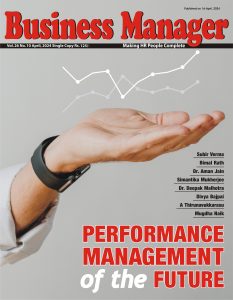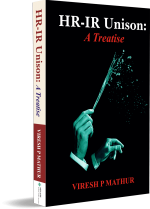Each era has a few buzz words. They capture the spirit of the times and define the focus which seems to determine the behaviour pattern. The buzz word of the current times can be several. Amongst the more common ones would be talent, technology, agility, new era, identity, relationships, developing self, waiting for one’s time to come and the list can go on.
Many of these words show an aspirational mindset. They display a pervasive need to realise oneself and to make a contribution to what one considers important. If one can do it in one’s context, nothing like it; else one seeks a context where one can realise one’s best self.
If one can aspire, realise and achieve in one’s own context one seeks relationships in that environment and often it takes the shape of identifying with local traits and projecting their greatness. Local heroes, local resources, local achievements are celebrated and one identifies with them. The context becomes important.
If however, one cannot achieve one’s best self in the environment in which one was born, one tends to migrate. One moves away from the context of one’s origin and seeks realisation in another context, almost any context where one’s talent can blossom and express oneself. This leads to the process of migration. Often pursued by the capable who could not achieve in the context in which they were born, migration provides the answer. The direction and location of migration cannot always be programmed but very often the opportunity which one can generate or visualise in another context leads to migration.
Between these two arenas, the local and the migratory, talent defines success.
The buzz words therefore have their origin in the way talent sees the situation. Talent can be intrinsic and or extrinsic. If it is intrinsic,it is easier to nurture. In that case, development of talent is organic and it is rooted in the personality. Extrinsic talent is ‘acquired’ through learning and a combination of one’s innate ability with inputs triggered by learning.
One moves away from the context of one’s origin and seeks realisation in another context, almost any context where one’s talent can blossom and express oneself. This leads to the process of migration. Often pursued by the capable who could not achieve in the context in which they were born, migration provides the answer.
That may be a moot point. The important thing is that in the emerging era, both identity and relationships are defined and understood with reference to developing oneself.
‘Developing oneself’ can be a tricky affair if it does not integrate with the requirements of livelihood. Thus, it is that while there is an internal urge and trajectory there is also the external pressure of ‘a requirement’. The external requirement is often in the shape of‘an opportunity’. The internal urge manifests itself is a pursuit.
Both-internal and external factors-need to be in synergy with each other and resources. This is where class distinction becomes relevant. Whether one likes it or not the more generously endowed upper classes do have a definite edge over others. This is so because their resources are superior and therefore their talent gets better opportunities to grow and develop.
Factors small and big, then begin playing a part. At times even the language which one uses becomes an instrument of differentiation.
India in its first sixty years of its Independence (probably more) was ruled by the people with felicity in English. Felicity in English duly leavened by a mission school education or a public-school education was the defining of an elite. This was often followed by a placement abroad in a presumed- to- be elitist institution. These institutions were invariably ranked from the English-speaking world. Traditionally they came from United Kingdom, USA and alumni from there were suo-moto celebrated.
Some of it changed, some of it still needs to change. Amongst the more successful post-Independence educational institutions included the IITs, the IIMs and a few others. Invariably their road to fame included two characteristics. One was admission carried out through an immaculately fair and ability-based screening. Be it CAT or JEE, both were known to be fair like other similar screenings. This was the making of a genuine revolution in education in India. The general university system remained more populist oriented and therefore lost out in branding.
The second reason for the pre-eminence of the IITs and the IIMs was distinctly different. That was because the best of the IIT products were reported to be making careers in foreign locale or foreign institutions. That, again became a trait of elitism. The IIM products had similar opportunities but did not acquire the same notoriety in-a-manner of speaking as the IIT alumni did. Perhaps IIM products being fewer in number were not visible to same extent as the IIT products.
Here in comes the factor to mull about. Supported by public funds if the products of the IIT and IIM systems etc were not harnessed for national growth per se, why would they need to be supported by public funds? That is be a separate story.
The important concern is how to understand talent, what are the buzzwords of the times. How, indeed, can it be harnessed to aid the growth of the community which supports their fruition?





























Add comment